Veranstaltungen und Nachrichten
Veröffentlicht am 18/05/2023
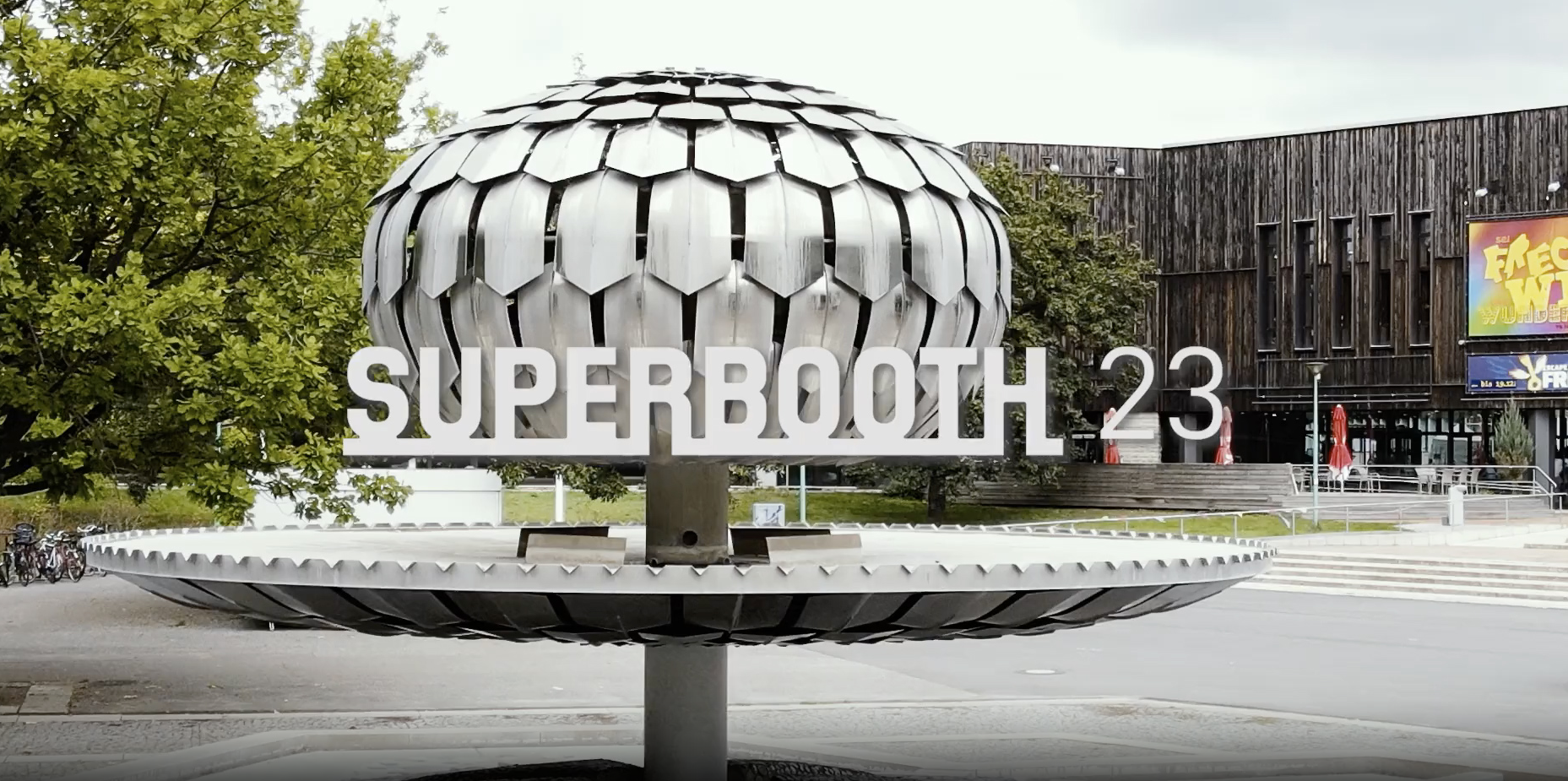
Superbooth 2023 is the ultimate event for electronic music enthusiasts, synth lovers, and modular fanatics. Whether you are a professional musician, a hobbyist, or a curious beginner, you will find something to inspire you at this three-day festival of sound and technology.
Superbooth 2023 was held from May 11th to May 13th at Fez-Berlin, a former youth center turned into a cultural hub.
More than 250 exhibitors were there showcasing their latest products, from analog classics to digital innovations.
Milk Audio Store did not miss the opportunity to get immersed in the world of electronic music connecting with other like-minded people.
Let’s see what we liked the most at the show.
CUNSA is a word from the Modena’s dialect. It means curing, seasoning (of foods) or tanning (of leathers).
Seasoning is crucial for cooking. It is a process that enhances the flavors, glues the ingredients together, and even adds some unexpected kick.
From a gentle refining touch to a shovelful of spice, CUNSA is the perfect seasoning tool for your patches. It can sweeten a sour lead or beef up an insipid bass line, and anything in between. And, just like a good oil, you can even taste it by itself!
Well, in fact CUNSA is a quadruple analog pingable multimode resonant filter, saturator, mixer, and oscillator.
It is our sound seasoning tool: it can gently even a patch, applying a final touch, or it can set it on fire with a ridiculous amount of spice. It’s up to you and your cooking style! It consists of four multimode resonant filters with a custom saturation and feedback control that you can use independently or in various combinations and roles thanks to a series of seminormalizations.
Go get more about Cunsa in our dedicated post.
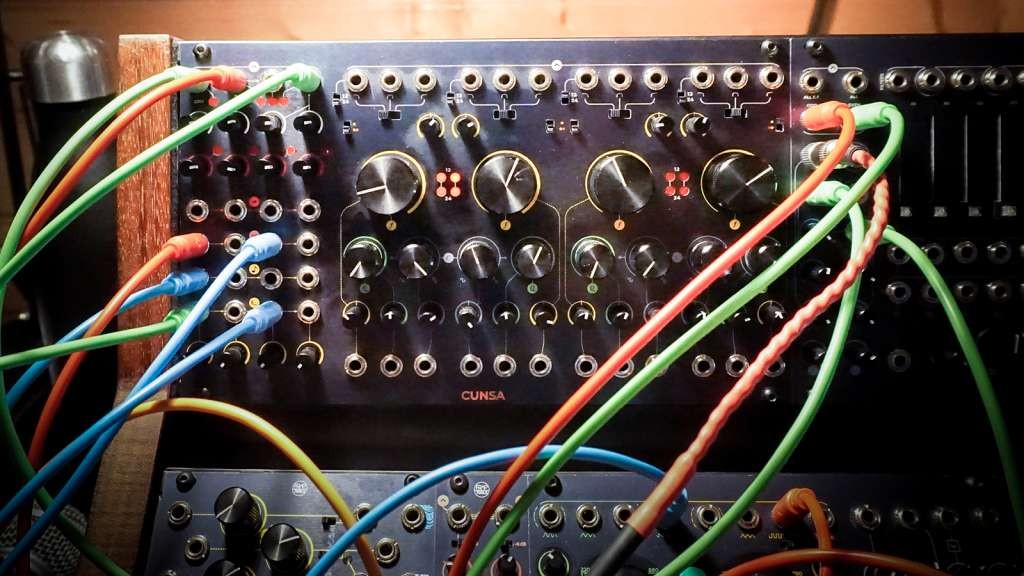
Known for its modular cases, the company has presented a very interesting prototype.
Major Tom is a performance sequencer with four channels. It sports 10 freely editable patterns per track.
It allows for a high level of flexibility when creating complex grooves as it supports the easy creation of groove and polyrhythm sequences thanks to the integrated quarter and triplet step buttons.
The performance sequencer features an expansion module that can be used to increase the number of channels up to 6 while offering internal and external clock options.
It seems to be suitable for both studio and live performances.
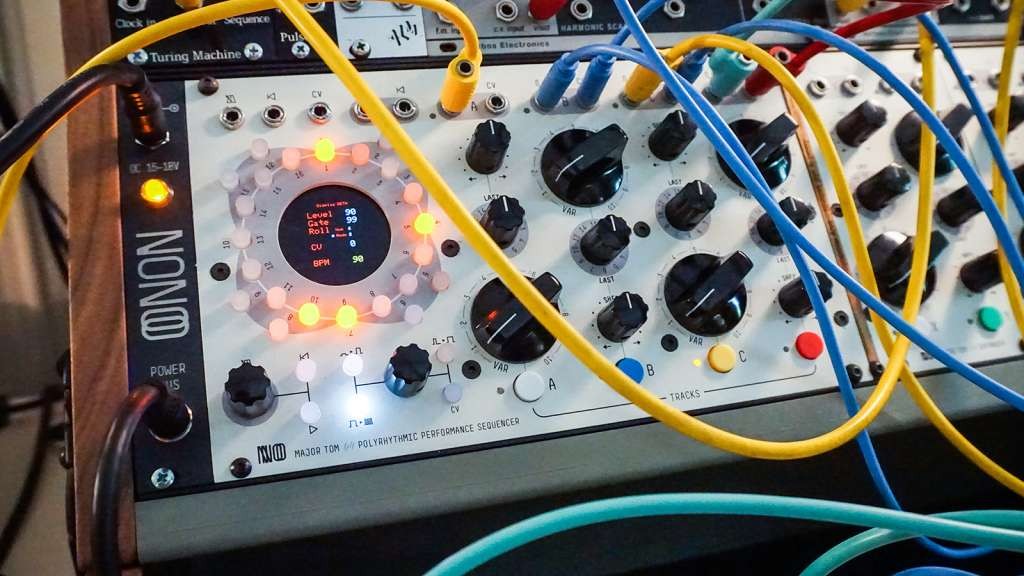
and a super-clean and DC-coupled signal path designed with high-quality VCA and op-amp chips.
The guys at Xaoc devices have carefully crafted Ostrawa's voltage control response to achieve what we believe to be the optimal user experience found in a Eurorack mixer.
The design features an elaborate control circuit that combines the internal voltages generated by the panel potentiometers with external CV over volume and stereo balance.
The result is a natural attenuator response that constrains VCA gain to a usable range while minimizing distortion.

Drezno II is an improved version of the original Drezno module.
It is an essential member of the 8-bit Xaoc Devices Leibniz Binary Subsystem. The Leibniz subsystem is a family of modules that operate on 8 binary (two-state, on/off) signals.
These signals are arranged as 8 bits of digital data and may represent analog signals and voltages.
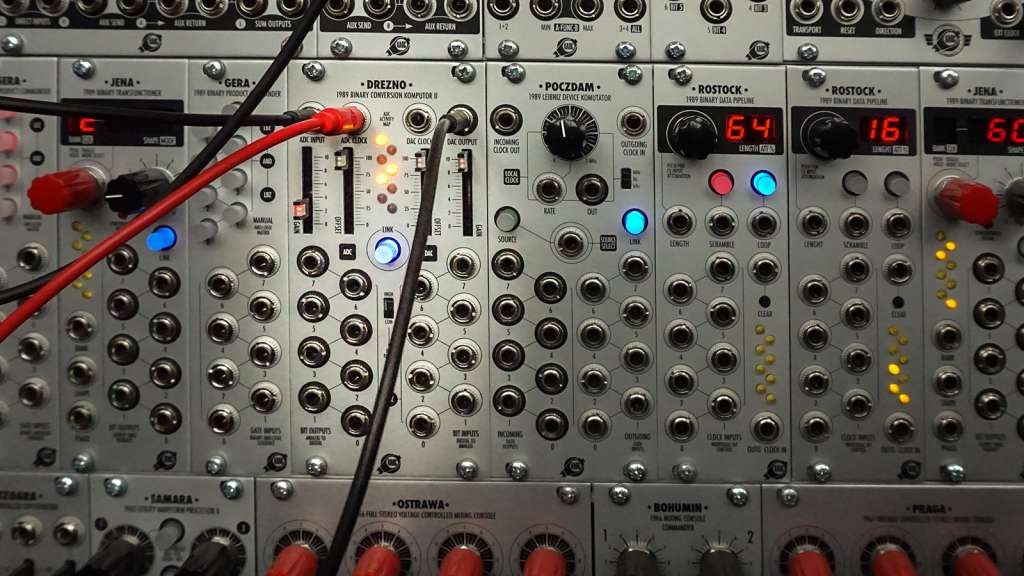
Anche Rostock is a component of the Leibniz Binary Subsystem. It is a data pipeline, a FIFO (first in—first out) shift register, or a very short digital delay.
The module operates similarly to a BBD delay or an ASR (analog shift register), except that it is digital.
It consists of a chain of memory cells that pass bits from one to another at each clock cycle.
The delay length is variable from 1 to 64 stages (with optional looping and scrambling).
It works by processing data in the Leibniz bus and must be connected to other Leibniz modules using data ribbon cables at the back.
Rostock may process data sequences representing rhythms, control voltages, audio-rate signals, and even video signals because the bits can change at extreme rates (up to 2MHz).
In addition, its memory may be digitally looped. Delaying and looping is a fundamental building block for sequence automation, pattern and chaos generation, and various cybernetic modular patches.
In sum, Rostock is a multi-purpose open-ended device that invites creative thinking.

The Make Noise/soundhack Spectraphon is a dual Spectral Oscillator coded by Tom Erbe of soundhack.
It uses real-time spectral analysis and resynthesis to create new sounds from those that already exist.
It is inspired by classic electronic musical instruments of the past, including spectral processors, additive synthesis, vocoders, and resonators especially the Buchla 296 and Touché, but it takes a physical form more resembling the classic analog dual complex oscillator in the lineage of the Buchla 259 and the Make Noise DPO.
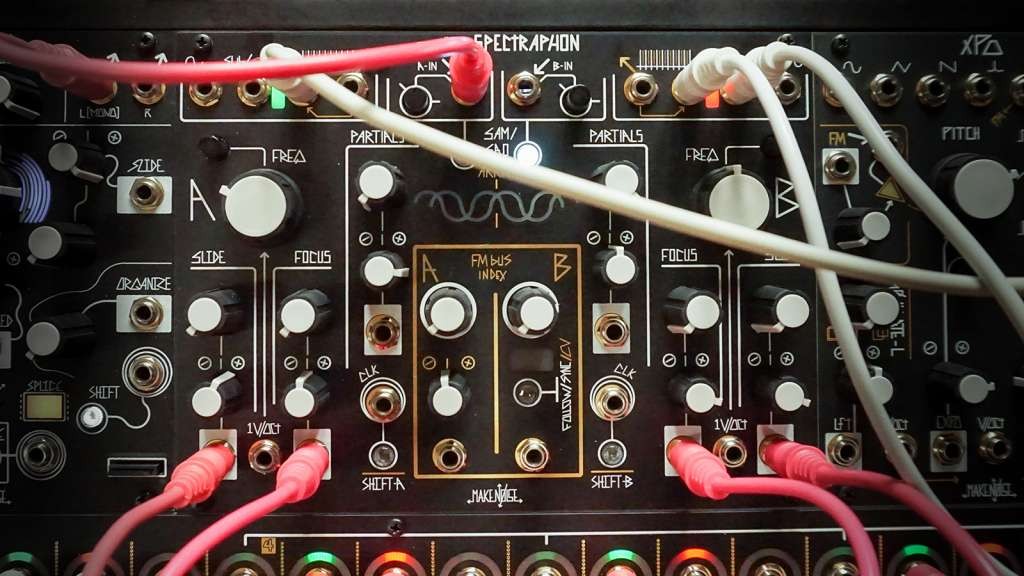
Tiptop Audio has announced a fully polyphonic eurorack system.
This system allows, thanks to a new protocol called ART, to reproduce polyphonic notes, monophonic notes and create multi-channel polyphony in one cable.
This allows the user to use the signal flow of a polyphonic synth more easily and immediately, without connecting 8 cables for 8 voices of polyphony.
The poly modules are:
New from the Buchla series are the 207t and 296t modules.
The Tiptop Audio Buchla 207t module is a Eurorack adaptation of the classic Buchla 207 Mixer/Preamplifier, a key component of many 1970s Buchla systems.
The 207t module offers a six-channel stereo mixer with channel mutes, level sliders, pan knobs, and routing switches.
It also features a built-in preamplifier that can amplify external signals from microphones, guitars, or other instruments.
The 207t module preserves the original circuitry and sound of the Buchla 207, while adapting it to the Eurorack format and voltage standards.
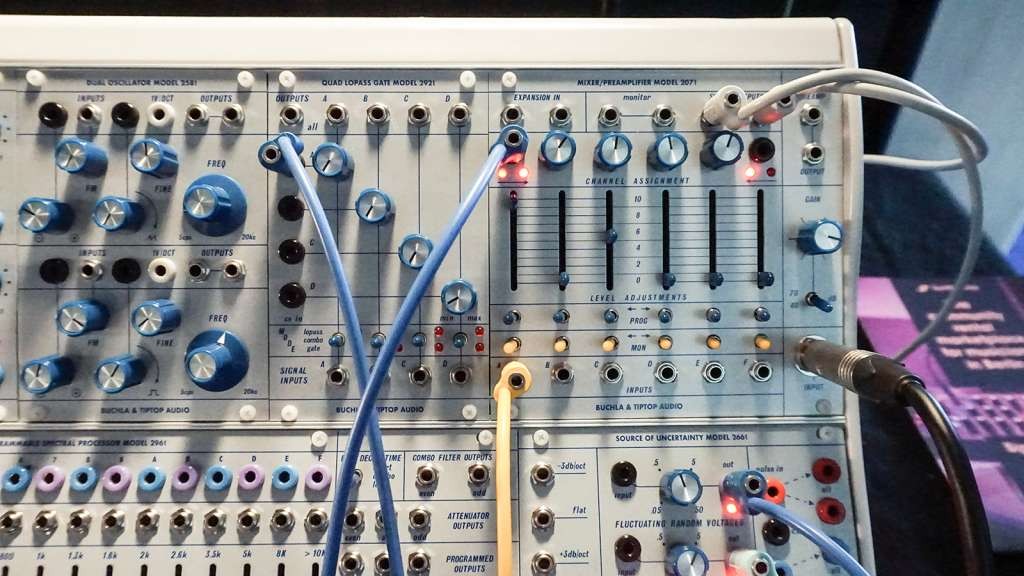
The 296t module is a Eurorack adaptation of the legendary Buchla 200 Series Programmable Spectral Processor, a powerful and versatile spectral filter that can be used for sound design, analysis, and synthesis.
The 296t module features 16 bandpass filters with individual outputs, as well as three inputs for even, odd, and all bands.
The module also has a built-in envelope follower and a programmable memory section that can store and recall up to 24 filter settings.
The 296t module can be used to create complex timbres, morph between different sounds, isolate or enhance specific frequency ranges, and much more.
The module is compatible with both Buchla and Eurorack voltage standards, and offers a unique sonic palette for modular enthusiasts.

Well, this is exactly as the Oberheim OB-X8… but desktop.
Oberheim OB-X8 Desktop
Tagh v2 is a very interesting module that generates random CVs in an intelligent way.
It features a Sample & Hold, a random generator, a FO with morphing, an envelope generator and a white noise generator.
The Aradh, on the other hand, is a transistor ladder filter with integrated VCA that can be inserted pre or post filter.
It integrates an Envelope follower and a strike input to emulate the low-pass gate to vactrol.
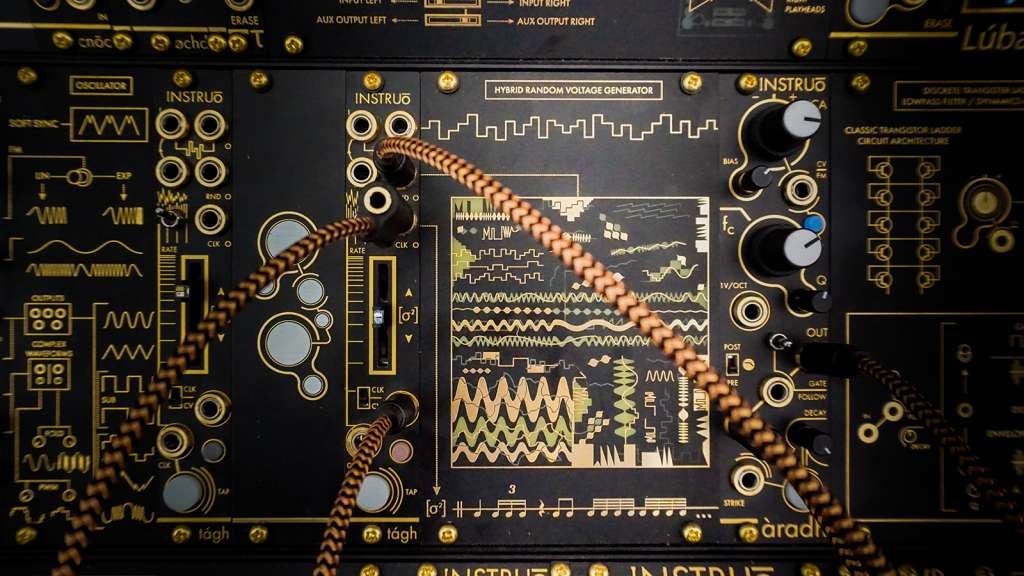
Basil is a compact, yet flexible, digital stereo delay module built on the Bastl Pizza platform.
It offers clean delay, as well as lo-fi flavors, and its Space section opens the doors to exploration far beyond simple delay territory.
The Basil delay buffer modulates really well, allowing to recreate most classic time-based effects, such as chorus, flanger, vibrato, pitch shifter, reverb, and stereo widener, among others, and navigate between them with just a few performative gestures.
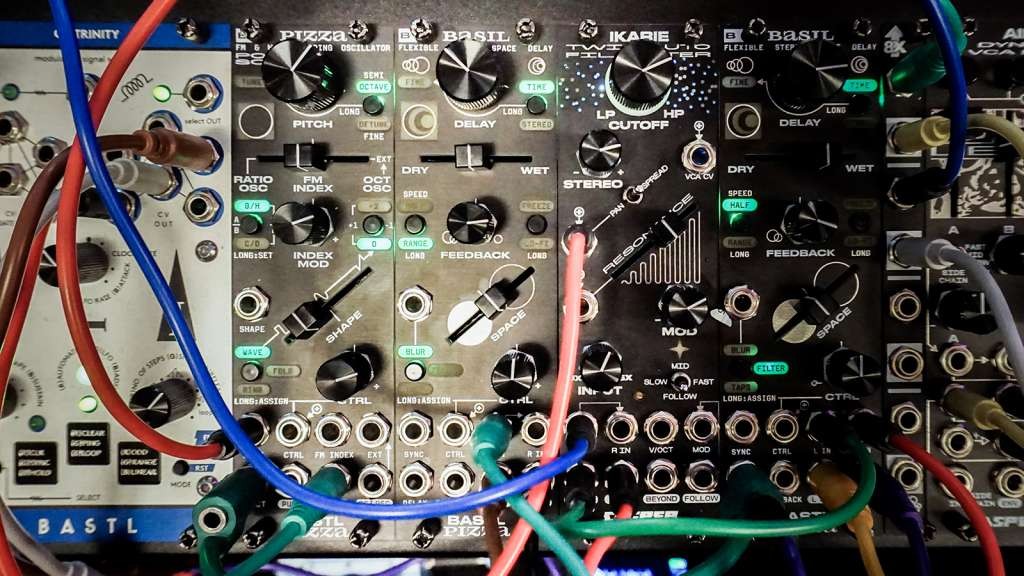
The Steampipe is still a prototype but it is a true physical modeling synthesizer developed in close collaboration with Dutch company 112.dB.
The Steampipe has no conventional oscillators. Instead, it mimics the way sound is created in wind instruments and it is fine-tuned to create a wide range of sounds - everything from wind instruments to strings, pipe organs, crazy effects and beyond.
The Steampipe has three major sections – STEAM, PIPE and REVERBERATOR.
The STEAM section can be compared to the lungs and mouth of a musician.
The generator creates the flow of air or “steam”, the envelope in this section determines the force with which it is blown out. DC/noise is the noise you get when blowing out. DC/Noise on the Steampipe can also be replaced with an external audio source.
The PIPE section can be compared to a flute. In the pipe, the tune is formed.
Push (in feedback) bounces the steam like it does in a flute and generates the tone. The delay box subsection changes the flute’s tuning and shape.
The REVERBERATOR adds space and ambience to the sound.

The Super Gemini is a 12-voice polyphonic, binaural analog-hybrid synthesizer.
A harmonious marriage of state of the art FPGA digital hardware oscillators and voltage controlled analog technology.
It is flexible, immediate, powerful and refined with a gorgeous analog tone.
Rich and evolving textures are easily teased from the unique super-wavetable core and can be shaped and manipulated with the binaural analog signal path and flexible modulation.
Robust, compact and inviting to pick up and play with smooth, solid and responsive controls throughout, it cries out to be played.
Well, we have to say that we really liked this device a lot.
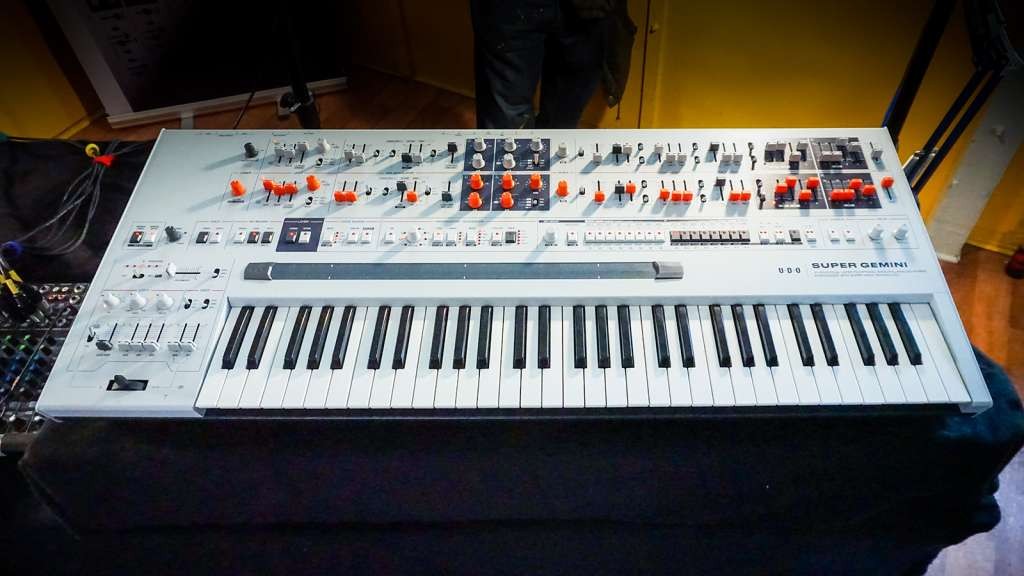
The space is over and we really think we just scratched the surface of this very interesting event. ------
Stay in touch with us and, eventually, subscribe to our Milk Audio Store newsletter to stay updated on all the information and the upcoming news.
Thanks for following us!
Sei dabei und sichere dir 5% Rabatt auf deine nächste Bestellung!

Leerer Wagen